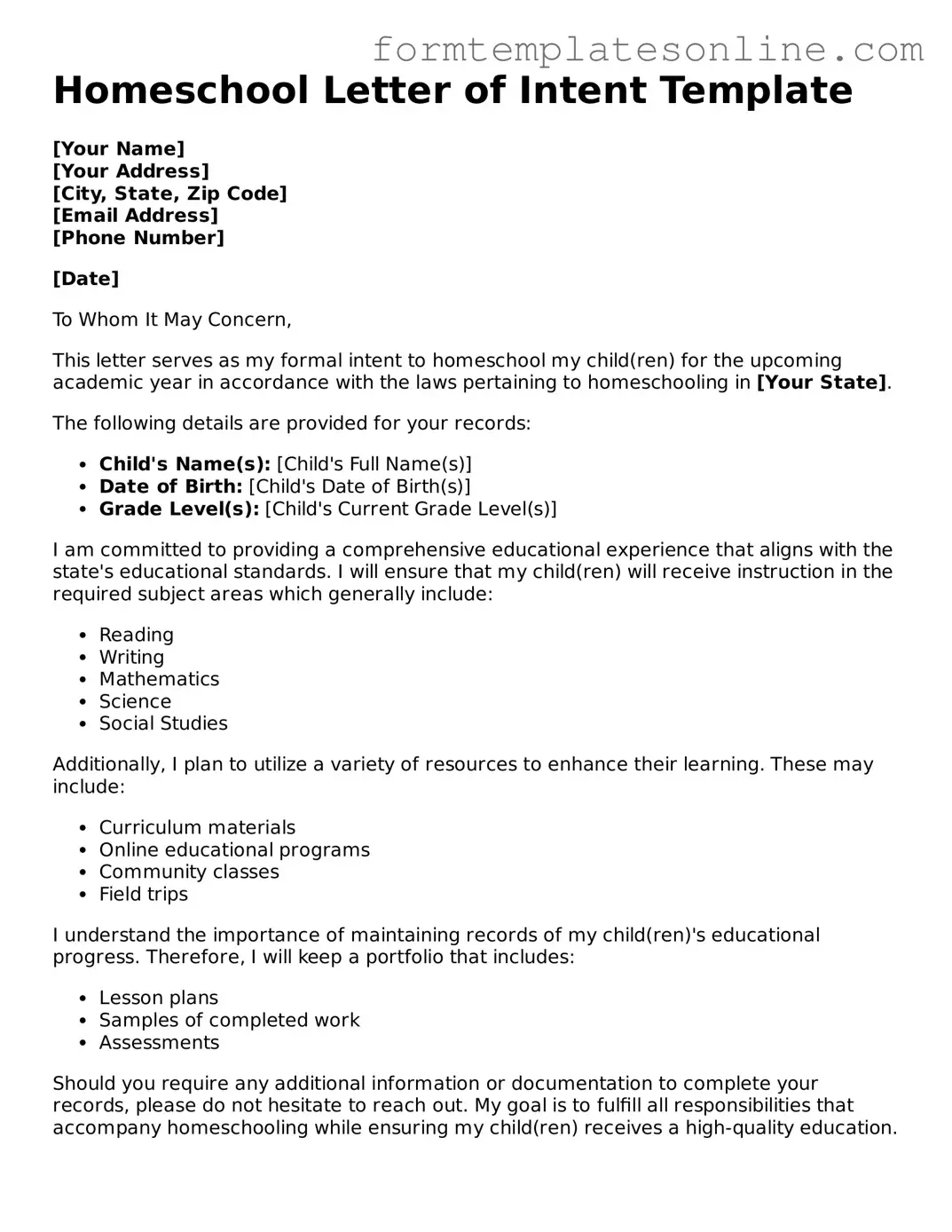What is a Homeschool Letter of Intent?
A Homeschool Letter of Intent is a formal document that notifies your local school district of your decision to homeschool your child. This letter typically includes your child's name, age, and the educational plan you intend to follow. It serves as a way to keep your district informed and ensures that you are complying with state laws regarding homeschooling.
Do I need to submit a Homeschool Letter of Intent every year?
Yes, in most states, you are required to submit a new Homeschool Letter of Intent each year. This keeps your local school district updated on your homeschooling status and helps maintain transparency regarding your child's education. Be sure to check your state's specific requirements, as they can vary.
What information should be included in the letter?
Your Homeschool Letter of Intent should include your child's full name, age, and the address where you will be homeschooling. You may also want to include your educational philosophy and the curriculum you plan to use. Providing this information can help clarify your educational approach to the school district.
Where do I send the Homeschool Letter of Intent?
Typically, you will send your Homeschool Letter of Intent to your local school district's office. Some states may have specific forms or online submission processes, so it's wise to check your district's website or contact them directly for guidance.
Is there a deadline for submitting the letter?
Many states have specific deadlines for submitting your Homeschool Letter of Intent, often at the beginning of the school year. It's crucial to be aware of these deadlines to avoid any potential issues with your homeschooling status. Check your state's laws to ensure you meet the requirements.
What happens if I don’t submit the letter?
If you fail to submit a Homeschool Letter of Intent, you may face legal consequences. Your local school district could consider your child truant, which may lead to fines or other penalties. It's essential to follow the proper procedures to ensure your homeschooling journey is smooth and compliant with state laws.
Can I withdraw my child from public school before submitting the letter?
Yes, you can withdraw your child from public school before submitting the Homeschool Letter of Intent. However, it's a good practice to inform the school of your decision to homeschool. This helps avoid any misunderstandings and ensures a clear transition from public school to homeschooling.
Do I need to keep records after submitting the letter?
Yes, maintaining records of your homeschooling activities is important. While the Homeschool Letter of Intent notifies the school district, you should also keep track of your child's progress, curriculum used, and any assessments. This documentation can be helpful if you need to demonstrate compliance with state regulations.
Can I change my educational plan after submitting the letter?
Absolutely! You can modify your educational plan at any time after submitting the Homeschool Letter of Intent. If you make significant changes, it may be a good idea to inform your school district, especially if those changes affect your child's learning approach or curriculum.
